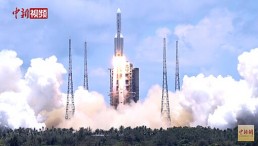A group of nuclear specialists believes that humans are near the discovery of a new paradigm for nuclear power. They emphasize the importance of nuclear batteries in today's world, citing positive impacts on avoiding catastrophic events brought by climate change.
In an interview with MIT News, Professor Jacopo Buongiorno describes his and his team's proposal of a new generation of relatively tiny and inexpensive factory-built reactors that are designed for autonomous plug-and-play operation similar to plugging an oversized battery.
These systems are believed to provide heat for industrial processes and electricity for a military base or a neighborhood. These are the nuclear batteries that could play a significant role in reducing carbon emissions from the electrical systems to avert adverse impacts of climate change.
What's New with Nuclear Batteries?
According to Professor Buongiorno, the design of nuclear batteries takes the concept of factory fabrication and modularity to an extreme. The nuclear battery concept is different from earlier proposals of reactors in which the nuclear battery is so small that the whole powerplant is built in a factory and fits in a standard container.
This eliminates other potential problems, particularly from the economic point of view. No more construction sites that might be the source of every possible schedule delay and cost overrun for nuclear projects for the past two decades.
The plug-and-play system enables electricity to be a sort of energy on demand. If a customer needs heat or electricity, they could get it within a couple of months or even weeks. Scientists characterize it as a product rather than a project.
ALSO READ: NASA Plans to Operate Nuclear Power Plants on Moon and Mars by 2026
Are Nuclear Batteries Safe?
Professor Buongiorno said that nuclear batteries are exceptionally robust. With its small size, the overall amount of heat it generates is proportional to the power, which is small. More so, its small size makes it easier to store ad keep cool under all circumstances.
Moreover, nuclear batteries have a robust containment structure that protects them against any release of radiation. For security, the researchers envision it to be located below grade to provide physical security from external attackers.
He also noted that similar nuclear mishaps like the three famous nuclear accidents are mediated by the design of the nuclear battery, specifically its small size.
Will Nuclear Batteries Work and Become Widely Available?
NASA and Los Alamos National Laboratory have reportedly done a similar product that they dubbed as a microreactor. They used it for space applications, unlike the large nuclear plants that take many years to build. Other companies are also developing their designs of nuclear batteries.
The next step will be to build a pilot laboratory at one of the national laboratories which could handle nuclear testing, which involved subjecting it to extreme conditions than it could ever encounter in normal operation.
"These nuclear batteries are ideally suited to create resilience in very different sectors of the economy, by providing a steady dependable source of power to back up the increasing reliance on intermittent renewable energy sources such as solar and wind," professor Buongiorno said in the interview as quoted by SciTech Daily.
Also, these batteries can help alleviate the pressure on the grid systems as they would be placed where their output is needed. With greater resiliency against external factors that disrupts the grid, it eliminates the issue of transmission losses.
According to an article in Forbes, the local flexibility of nuclear batteries is the key to a developing world since it could be delivered anywhere. It could be in the urban or rural areas or even maritime locations and put it into service immediately to provide electricity, heat, and clean water.
RELATED ARTICLE: Small Nuclear Reactors Could Be the Future to Greener Energy
Check out more news and information on Nuclear Energy in Science Times.













!['Cosmic Glitch' in Einstein's Theory of General Relativity Could Be Explained in This New Scientific Tweak [Study]](https://1721181113.rsc.cdn77.org/data/thumbs/full/53435/258/146/50/40/cosmic-glitch-in-einsteins-theory-of-general-relativity-could-be-explained-in-this-new-scientific-tweak-study.jpeg)
